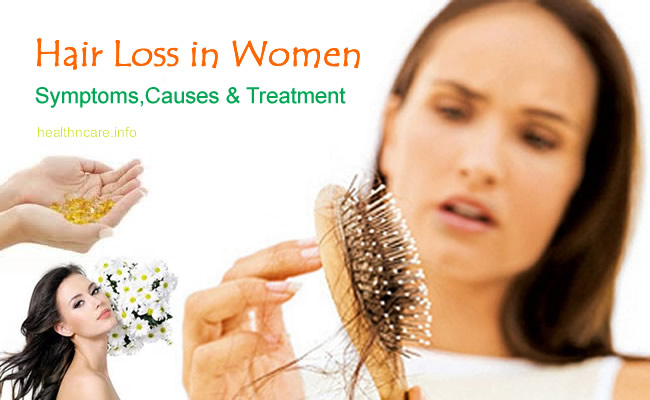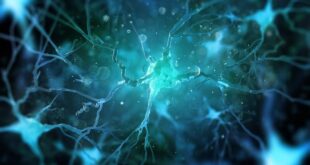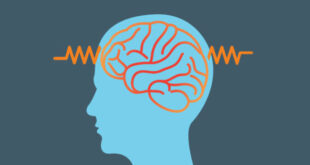Read Hair Loss in women treatment, medication, causes, symptoms, diagnosis, test and research.
Hair loss in women can occur over 60s 50s, 40s, after pregnancy or even under their 30s. Hair loss in women is common phenomenon because every women loses about 50-100 hair daily. But if this number increases up to 200-300 daily then this will be an alarming situation because it has been crossed the normal range of hair shedding in women per day.
Loss of hair from top of the head may termed as baldness or technically termed as alopecia. Number of factors are involved in hair loss or baldness in women. These factors may be systemic or local due which hair loss occurs.
Stress is one of the major factor of hair loss in young women. Actually stress is connected with imbalance of neurotransmitters that leads to imbalance of hormones and nutritional deficiencies. These disturbances results into abnormal hair loss, scaly skin, weak nails and poor complexion of skin.
Hair Loss in Women Sign and Symptoms
The symptoms of hair loss are different in every case but some common symptoms of hair loss in women are:
- Receding hair lines from top of the head
- Formation of circle shape patches on the head
- Thinning of hair on the scalp
- Hair shedding with dead roots
- Feeling of itching in case of allergy
- Poor texture of hair
Causes of Hair Loss in Women
There are number of causes of hair loss in women which are discusses one by one:
Hormonal Problems
Women with hormonal problems experience hair loss on top of head and excessive growth of hair on face. Hormones which are involved in hair loss are thyroid hormone , estrogen and many other. There are number of factors which disturb the balance of these hormones like pregnancy, childbirth, oral contraceptives, stress, medicines like ethinylestradiol and diet.
Hair Loss in Women caused by Scalp Infection
Number of micro organisms that can cause scalp infection. Fungus is one of most common cause of scalp infection for example ring worm, tinea capitis, pityriasis, tinea corporis and cradle cap. Main symptom of scalp infection is itching and irritation on the head. scalp infection is most likely in those areas where humidity is more than normal.
Hair Loss in Women as Medicine Side Effects
Certain types of medications are also involved in hair loss in women like:
- Anti-Cancer drugs (chemotherapy)
- Birth Control Pills
- Interferon
- Steroids like Prednisolone
- Contrast Media like Iohexol
- Hormone Replacement Therapy
Hair Loss in Women due to Diseases
Certain diseases can act as causative agent for hair loss like
- Systemic lupus erythematosus(SLE)
- Depression
- High blood pressure
- Anemia
- Auto immune disorders e.g arthritis
- Diabetes
- High cholesterol level
- Deficiency of thyroid hormone
Hair Loss in Women due to Emotional Shock or Trauma
Many people experience hair loss after emotional shock or trauma examples are:
- Death in family
- High grade fever
- Weight loss
- Major surgery
Hair Loss in Women due to Stress and Depression
Stress is one of the major factor involved in hair loss in women. Research has shown that stress plays very important role in women hair loss because it constricts the blood capillaries that provide the blood supply to scalp. Due to constriction of blood capillaries limited amount of nutrients reaches to the scalp resulting in hair loss and thinning of hair.
Hair Loss in Women due to Nutritional Deficiency
Nutritional deficiency is another prominent cause of hair loss in young women. This type of hair loss occurs when body is deficit of vital nutrients necessary for normal growth of hair like:
- Folic acid(vitamin B9) deficiency
- Iron deficiency
- Biotin Deficiency
- Less intake of Protein rich diet
- Vitamin A(carotenoids) deficiency
- Lycopene deficiency
- vitamin c(ascorbic acid0
- Calcium
- silicone deficiency
Hair Loss in Women due to Environmental Factors
Environmental factors may also be a cause of hair loss in women because women hair are more prone or susceptible to air pollution and photosensitive. This type of problem occurs in metropolitan areas where risk of air pollution is more. Most common pollutants that are responsible for hair loss are:
- Lead particles
- carbon residue suspended in air
- Dirt particles
- Hydrocarbons
Hair Loss in Women due to Sensitivity
Every woman has her own body chemistry. so, it is possible that every woman may have some different kind of hair sensitivity. For example some women hair are sensitive to tap water while some are sensitive to ordinary shampoo and other cosmetic products containing sodium laurylsulphate. so, it is difficult to point out a single cause of hair sensitivity in women.
Hair Loss in Women due to Genetic Factors
Some women experience hair loss in their family history because of specific genetic make up responsible for hair loss in women in certain years of their age. This type of hair loss can be slow down by using specific medications but it is impossible to revert it completely e. g congenital triangular alopecia.
Other Factors of Hair Loss in Women
Gradual thinning of hair with age is a natural condition known as involutional alopecia. This is caused by an increasing number of hair follicles switching from the growth, or anagen, phase into a resting phase, or telogen phase, so that remaining hairs become shorter and fewer in number.
Hair Loss in Women Diagnosis and Tests
There are several diagnostic tests for hair loss in women, let’s take a look at these:
- The Pull Test
It helps to evaluate diffuse scalp hair loss. Gentle traction is exerted on a group of hairs (about 40–60) on three different areas of the scalp. The number of extracted hairs is counted and examined under a microscope. Normally, fewer than three hairs per area should come out with each pull. If more than ten hairs are obtained, the pull test is considered positive. - The Pluck Test
Pluck test is conducted by pulling hair out “by the roots”. The root of the plucked hair is examined under a microscope to determine the phase of growth, and is used to diagnose a defect of telogen, anagen, or systemic disease. Telogen hairs have tiny bulbs without sheaths at their roots. Telogen effluvium shows an increased percentage of hairs upon examination. Anagen hairs have sheaths attached to their roots. Anagen effluvium shows a decrease in telogen-phase hairs and an increased number of broken hairs. - Scalp Biopsy
Scalp biopsy is used when the diagnosis is unsure; a biopsy allows for differing between scarring and non scarring forms. Hair samples are taken from areas of inflammation, usually around the border of the bald patch. - Daily Hair Counts
Daily hair counts are normally done when the pull test is negative. It is done by counting the number of hairs lost. The hair from the first morning combing or during washing should be counted. The hair is collected in a clear plastic bag for 14 days. The strands are recorded. If the hair count is >100/day, it is considered abnormal except after shampooing, where hair counts will be up to 250 and be normal. - Trichoscopy
Trichoscopy is a noninvasive method of examining hair and scalp. The test may be performed with the use of a handheld dermoscope or a video dermoscope. It allows differential diagnosis of hair loss in most cases.Hair Loss in Women Treatment
Treatment for hair loss in women includes:
- Medicines for Hair Loss in Women
- Alternate Medicines
- Home Remedies
- Surgery
- Other Methods
Hair Loss in Women Treatment with Medications
Number of medications are used to treat hair loss in women which are discussed one by one:
Minoxidil(Rogaine)
Minoxidil was first used as vasodilator but its beneficial effects on scalp restrict its use as topical spray for hair loss especially in female pattern baldness. It mechanism is very unique minoxidil dilates the blood capillaries providing blood supply to scalp by increasing the production of nitric oxide. Nitric oxide acts as precursor for vasodilatory effects. This dilation will result into increase supply of blood to scalp and increase amount of nutrients are reached to the scalp which help in the nourishment of hair follicles and regrowth of hair. Minoxidil is marketed under brand name rogaine and it is available in two doses 2% and 5%.Hormone Modulators
In some women hair loss may be due to excessive production of androgens(estrogen). This excessive production of androgen known as hyperandrogenemia. In such condition we use hormone modulators to balance the level of androgens which are causing hair loss.
Treatment of such kind of hair loss is taking steroids like spironolactone marketing under the brand name of aldactone or we can use triamcinolone which also a steroid.Immunosuppressants
Some women have auto immune disorder like alopecia areata in which patches are formed on scalp and hair follicles become dead. In such condition patient will have to take immunosuppressants to suppress immune system because it is connected with immune system. Steroids have also some kind of immunosuppressant activity so some dermatologists recommend steroids to treat such kind of disorders.Anti Fungal Drugs
About 80% infections of scalp are due to fungus like ring worm, tinea capitis, pityriasis, tinea corporis and cradle cap. Main symptom of these infections are itching on scalp.
Following drugs can used to treat fungal infection like:- ketoconazole(Nizoral)
- Ciclopirox olamine
- Zinc Pyrithione
- Selenium Sulfide
- Clotrimazole
Anti Psoriatic Drugs
Hair loss in women may be due to psoriasis. In this condition scalp skin become red and inflamed and too much feeling of itching occurs. This is termed as psoriasis and it is treated by applying dithranol in form of cream or lotion.Corticosteroids
Corticosteroids are steroid in nature and they are widely used for the treatment of hair loss in many cases. They may be used in psoriasis, alopecia areata, alopecia totalis, atopic dermatitis and many other disorders of hair.Alternate Medications
Alternate medicine includes herbal treatments and other homeopathic treatments claimed to be effective in women hair loss. For example it is claimed that olive oil is very effective in stopping hair loss. other alternate medicines which are beneficial for hair loss are:- Panax Ginsing roots extracts
- Aloe Vera Gel
- Seeds of Phyllanthus emblica(Amla)
- Extract of Coriander
- Tricosaccaride
- Zanthin(Antioxidant)
Hair Loss in Women Treatment with Home Remedies
Inspite of discovery of new medicines most of the women are still using home remedies for hair loss due their effectiveness and free from any adverse drug reactions. Most famous home remedy for hair loss is making paste of Egg and yogurt by shaking them gently in a pan and then putting it on the scalp for about 2-3hrs and then wash hair thoroughly. This remedy is very famous among Asian population.
There are so many other home remedies also effective for hair loss in women like preparing a mixture containing glycerine, rose extract, Aloe vera and olive oil. This remedy is also very famous and efficacious in women with complaint hair loss.
Hair Loss in Women Treatment with Transplant Surgery
Hair Transplantation is usually carried out under cosmetic surgeon. In hair transplant surgery healthy hair from the back and sides of the head are move towards areas of thinning. The procedure can take between 4-8 hours, and sometimes more than one session can be carried out to make hair even thicker.
Transplanted hair falls out within a few weeks, but regrows permanently within months. Hair transplants takes tiny plugs of skin, each of which contains a few hairs, and implants the plugs into bald sections. The plugs are generally taken from the back or sides of the scalp. Several transplant sessions may be necessary.
Other Methods of Hair loss treatment
Loss of hair can be hide by using technique of comb over in which hair style is adjusted in such way that it covers the balding area. It is usually a temporary solution and effective only when the area of hair loss is minute. As the hair loss increases, a comb over becomes less effective. wearing a hat or a wig is other possible solution to cover bald area when area is large. The wig may be artificial or natural hair made to give genuine appearance of hair style.
In the United States, the best wigs are those that looks like original hair and difficult to differentiate. some Organizations collect people donations of their own natural hair to be made into wigs for cancer patients who have lost their hair due to chemotherapy. Moreover a number of topical camouflages are available such as Nanogen and Toppik and these are very popular as non-wig cosmetics which add electrostatic microfibres to your own hair.
Research on Hair Loss in Women
A number of researcher have shown that a specific gene SOX-21 plays very important role in hair loss in humans. It is also obvious from research that there is connection between elevated levels of prostaglandin type PGD2 and female pattern Baldness.
During research it was observed that about three fold increase in the level of prostaglandin PDG2 were discovered in tissue samples of balding areas compared to haired areas of the scalp. A PDG2-binding receptor, GPR44, has also been discovered. Now extensive research is going on to target GPR44 receptor which acts as prostalandin binding sites on the area of scalp.
 Health & Care Information
Health & Care Information 


